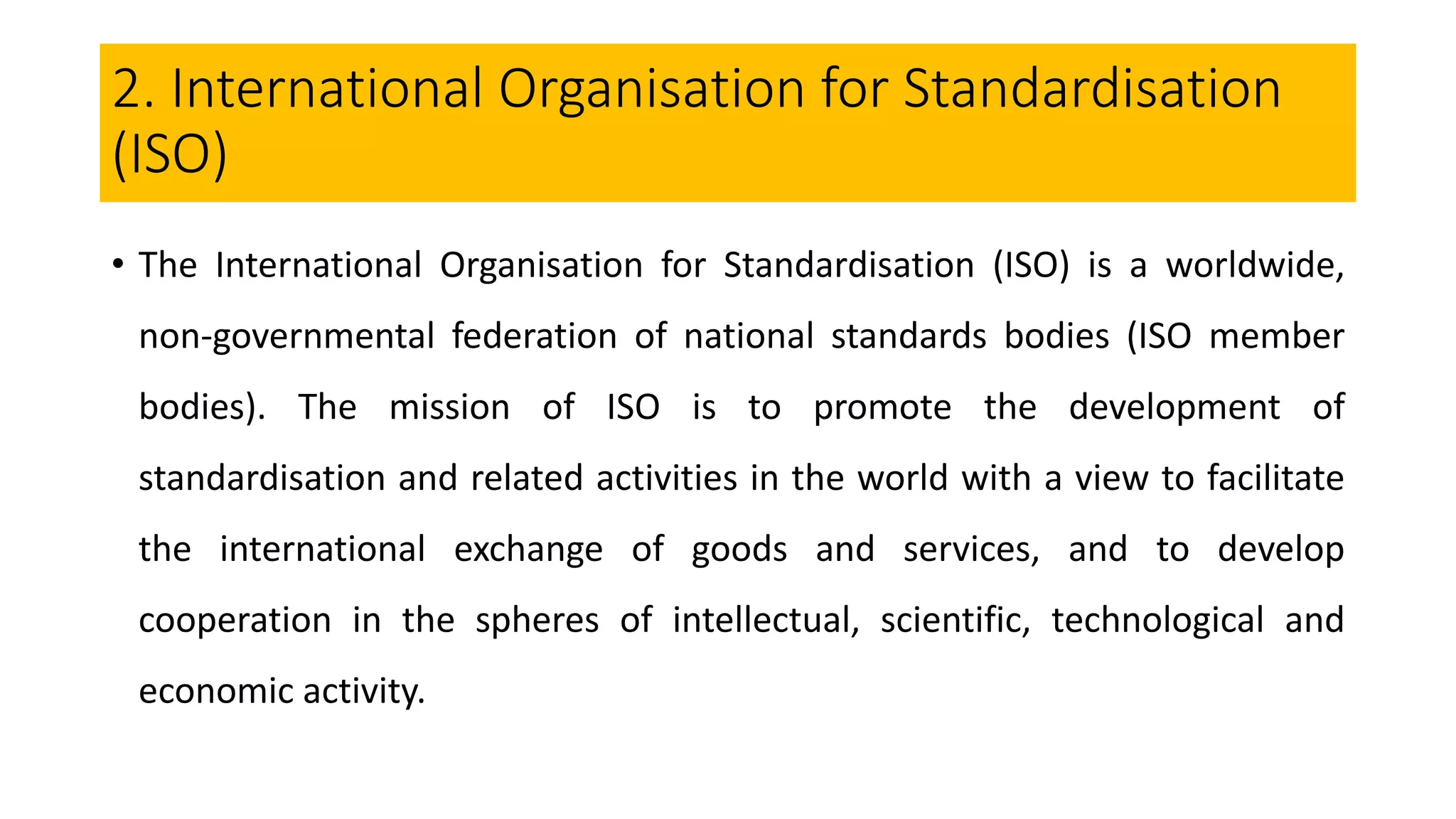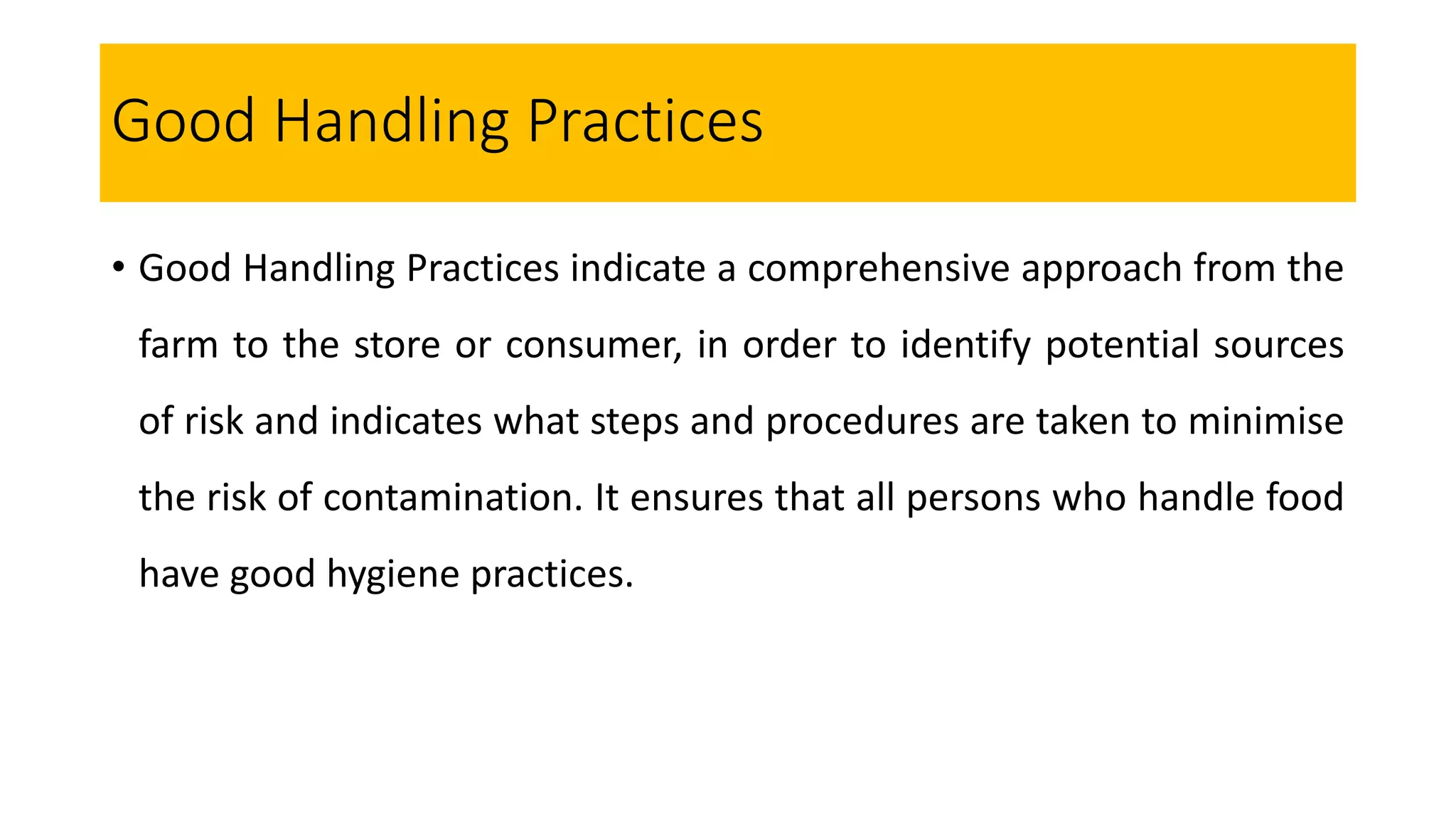The document focuses on food quality control, highlighting the importance of effective food standards at company, national, regional, and international levels to ensure food safety and facilitate trade. Major international organizations, such as the Codex Alimentarius Commission, ISO, and WTO, play vital roles in establishing and promoting these standards. It also emphasizes the necessity of good manufacturing practices, hazard analysis critical control points (HACCP), and proper analytical capabilities for maintaining food safety and quality.
























